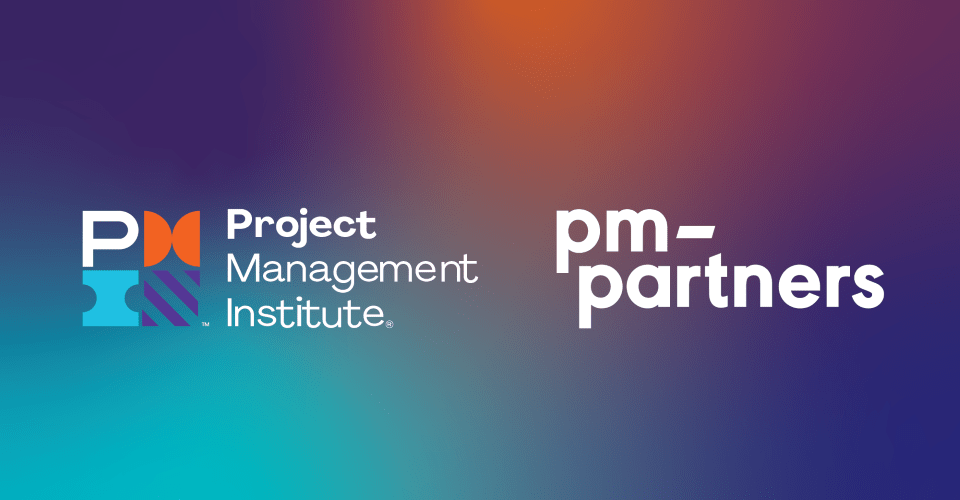PPM tools: Unlocking the full potential of your PPM implementation

Project Portfolio Management (PPM) tools can revolutionise how organisations manage resources and drive strategic goals. But many PPM implementations fail to live up to their promise. Here Ray Wall, Client Engagement Director at PM-Partners, explores how to leverage the full potential of PPM tools, avoid common pitfalls and ensure they deliver real value to your organisation.
For many organisations, managing the balance between day-to-day operations and driving change through strategic projects is a constant challenge. This dual responsibility often stretches resources thin and makes it difficult to prioritise initiatives that align with overall business goals. Decision-makers need visibility into their project portfolios, real-time insights into resource allocation, and the ability to assess risks proactively.
This is where Project Portfolio Management (PPM) tools come in. A well-implemented PPM tool centralises project data, enabling better decision-making, optimum resource use, and clearer alignment with strategic priorities. However, while PPM tools can be a silver bullet, their success depends on a thoughtful, well-executed PPM implementation strategy.
The strategic benefits of PPM tools
When successfully implemented, PPM tools bring a host of benefits that can significantly enhance how organisations manage their projects and portfolios, including:
- Improved decision-making: PPM tools consolidate data across projects, providing executives with a high-level view of performance, risks, and resource allocation and the ability to scenario plan the ‘what if’s’ of different sequencing or project prioritisation. This enables more informed decisions about which projects to prioritise and which to defer or cancel.
- Optimised resource allocation: By providing visibility into resource demand and availability, PPM tools allow organisations to allocate resources more efficiently, ensuring that the right people are working on the right projects at the right time.
- Improved transparency and communication: PPM tools foster better communication by creating a centralised platform where stakeholders can access real-time updates on project progress. This reduces the risk of miscommunication and ensures that everyone is working from the same data.
- Alignment with strategic goals: A well-implemented PPM tool ensures that projects are aligned with business objectives, helping organisations avoid investing in initiatives that don’t contribute to their long-term strategy.
Where organisations go wrong with PPM tools
Despite these clear benefits, many organisations fail to fully leverage PPM tools due to poor implementation practices. Our experience in remediating PPM tools reveals several common traps that organisations fall into. Most of these are avoidable but they can have long-lasting effects if not addressed early. Understanding and avoiding these pitfalls is critical to unlocking the full potential of PPM tools.
- No executive mandate: Without strong support from senior leadership, establishing the PPM tool as the authoritative source for project management becomes an uphill battle. Executive buy-in and backing is essential for driving adoption across the organisation.
- Over-configuration: One of the biggest traps organisations fall into is over-configuring their PPM tools. While it’s tempting to tailor the system to every business need, excessive customisation can make the tool overly complex, difficult to use, and harder to maintain. A simpler, more streamlined approach to configuration is often more effective and encourages wider user adoption.
- Unclear requirements: Many organisations fail to clearly define what they need from a PPM tool before implementation. Without a strong understanding of the functional, integration, and data requirements, the tool can end up misaligned with business needs. It’s important to invest time upfront in mapping out how the tool will fit into existing processes and identifying what it will and won’t deliver.
- Neglecting change management: PPM tools often require users to change how they work, and without a strong change management plan as part of your implementation stategy uptake will be slow. It’s not enough to simply introduce a new tool – organisations must actively support users through training and continuous engagement to ensure its fully utilised and provides the intended value.
- Ignoring delivery framework alignment: Many organisations use multiple delivery methodologies (Agile, Waterfall, hybrid, etc.) within an overarching delivery framework. Failing to embed the framework into the PPM tool can lead to inconsistent governance and risk management. Ensuring the PPM tool supports various methodologies is crucial for enabling flexibility and maintaining fit-for-purpose project oversight.
- Skipping critical integrations: Perhaps the most important integration points for PPM are to the ERP system (to enable project financials) and your people system (to enable resource management and scheduling). PPM tools also need to integrate with other key systems, such as Jira or Microsoft Project to offer a comprehensive view of portfolios. Depending on the platforms and systems you have in place, these integrations can be challenging, especially given configuration, location and data synchronisation issues, but without them the tool’s data will be incomplete, leading to misguided decisions and incorrect project reporting.
- Underestimating resource requirements: Implementing a PPM tool is a significant undertaking that requires dedicated time and resources. Many organisations underestimate the effort involved, leading to rushed rollouts that compromise the tool’s effectiveness. By way of example, you may need to work on standardising job family and role descriptions as significant inconsistency in this area will negatively impact resource management and scheduling capabilities.
- Failing to adopt a phased approach: Attempting to implement too many features at once can overwhelm users and reduce adoption. Proper planning and a phased rollout, focusing on core functionalities first, often ensures a smoother transition and better results.
Best practices for successful PPM implementation
To ensure a successful PPM tool implementation, organisations should follow these best practices:
- Secure executive buy-in: Ensure senior leadership understands the value of the PPM tool and is committed to supporting its implementation across the organisation.
- Prioritise simplicity: Focus on a streamlined, user-friendly configuration that addresses the most critical needs without over-complicating the system.
- Invest in change management: Make user adoption a priority by offering comprehensive training, continuous support, and clear communication about how the tool benefits day-to-day work.
- Integrate with key systems: Ensure the PPM tool is fully integrated with other critical systems, such as financial systems or task management platforms. These integrations must be thoughtfully considered and well planned – a thorough walkthrough of end-to-end processes ensures all data and information elements are clearly mapped and managed.
- Plan for a phased rollout: Start with core functionalities and gradually expand the tool’s use. This approach minimises disruption and allows for a smoother implementation process.
PPM tools hold the potential to transform project and portfolio management, offering better visibility, resource management, and decision-making. However, fully realising these benefits requires an implementation strategy that emphasises careful planning, strong leadership support, and a focus on change management. By avoiding common implementation mistakes and following best practices, organisations can ensure their PPM tools become powerful assets that drive business success.
Now is the time to assess your approach to PPM tools. Are you leveraging them to their full potential, or are you falling into common traps? Speak to our expert advisory team today and ensure your PPM tool delivers the insights and efficiencies needed to meet your strategic goals.

About The Author
Ray Wall
Client Engagement Director, PM-Partners
An industry leader in globally-recognised delivery methods and standards, Ray has a wealth of experience implementing effective governance frameworks and controls across diverse industries and organisations. He has a proven ability to help leaders and delivery teams achieve business agility through the design and execution of complex change and transformation.
As Client Engagement Director, Ray is responsible for the advisory and delivery teams focusing on client success. Prior to joining PM-Partners, Ray held senior positions in leading organisations including St. George Bank and Westpac Group, and spent several years optimising client delivery results as a management consultant.








